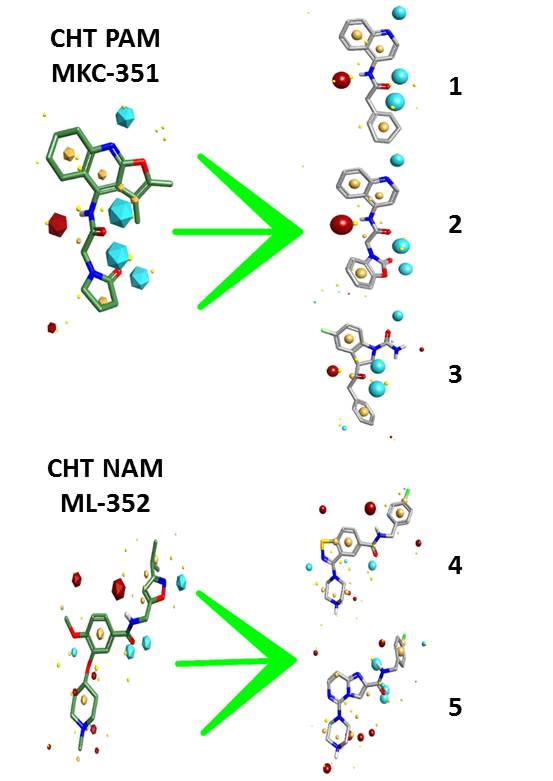Improving PROTAC properties via single-point changes to linkers
We explore how computational methods can be applied to proteolysis targeting chimera (PROTAC) design, to effectively tackle some of the ...
News
A variety of neurological conditions can potentially be treated through the stimulation of cholinergic neurotransmission. The choline uptake into certain neurons is mediated by the choline transporter (CHT), which is well-characterized but otherwise unexplored as a potential drug target.
A team consisting of scientists from Pfizer, Neusentis, Nanion Technologies, and Kissei Pharmaceutical Company used two compound sets: (1) a specially created set of 887 molecules derived from the full Pfizer compound screening collection using Cresset’s virtual screening tool Blaze; (2) 2,753 molecules from the Pfizer Chemogenomic Library. From these sets they were able to identify nine active small molecules that modulate CHT.
This work will enable them to test the hypothesis that positive modulation of CHT will enhance activity-dependent cholinergic signaling. Read the full paper Discovery of Compounds that Positively Modulate the High Affinity Choline Transporter.
The team had identified two CHT modulators from the literature: one CHT positive allosteric modulator and one CHT negative allosteric modulator. Each of these was used within Blaze to search the full Pfizer compound screening collection for compounds with similar electrostatic and shape properties and therefore potentially similar biological activity.
The computational team kept the top 500 compounds from each virtual screen, based on the Blaze scoring function to form a set of 1000 compounds. This set was filtered based on compound availability and the removal of chemically unattractive groups, resulting in a test set of 887 compounds. This library was screened in assays, as detailed in the paper.
Five compounds of interest were identified from the 887 test set created using Cresset’s Blaze. Three of these were confirmed as positive allosteric CHT modulators and two as negative allosteric modulators of CHT function. A further four compounds of interest were identified from the 2,753 molecules from the Pfizer Chemogenomic Library. The compounds of interest are shown in Table 2 ‘Tool compound data’ which forms part of the paper.
This paper demonstrates the high value of virtual screening in focusing a screening campaign. The team successfully identified previously unknown active and structurally distinct molecules that could be used as tools to further explore CHT biology or as a starting point for further medicinal chemistry.
